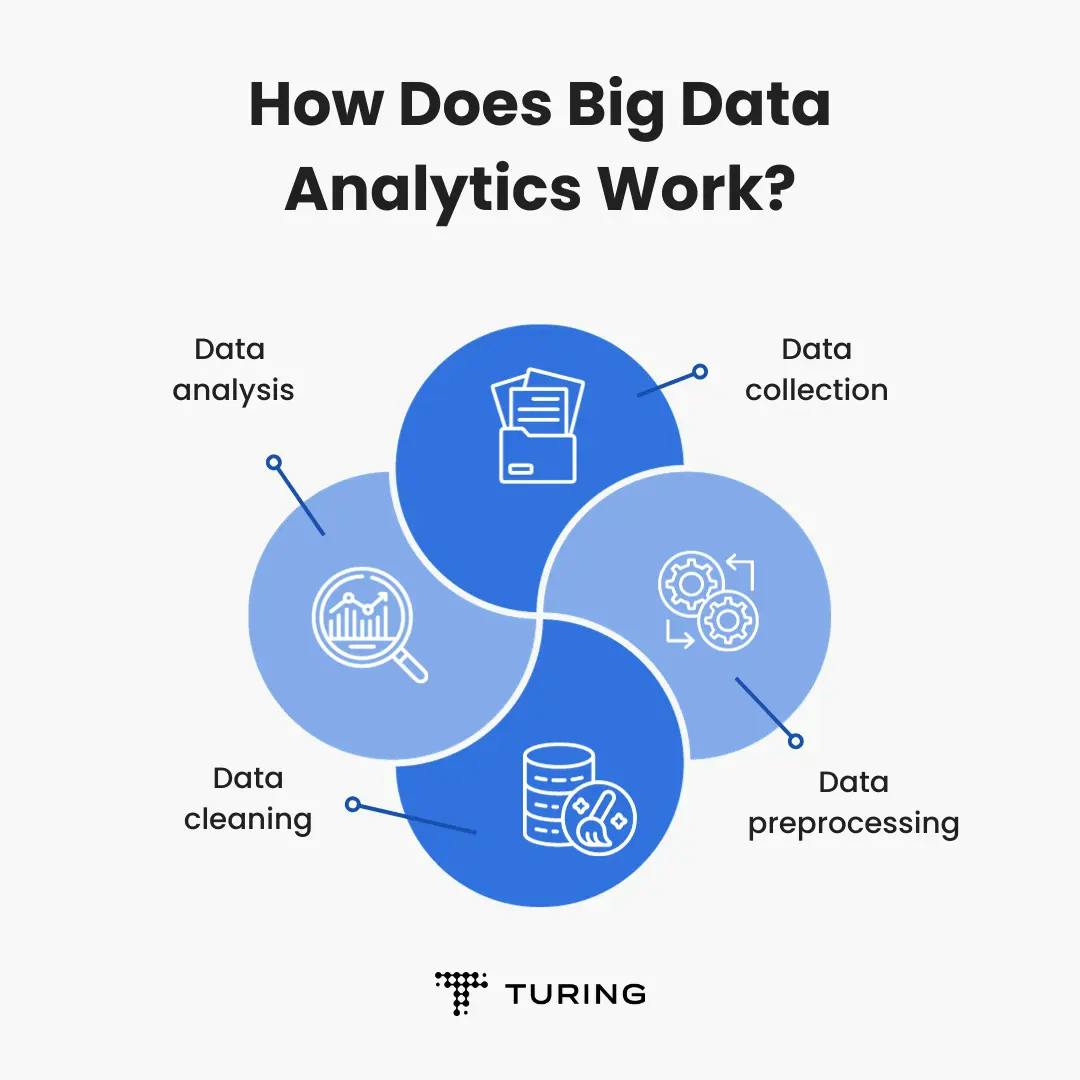The Bernard Rodriguez Journal
Exploring the latest trends and stories in news and lifestyle.
Data Deluge: Surfing the Waves of Big Data Analytics
Dive into the data deluge! Discover how to master big data analytics and ride the waves of insights for your success.
Navigating the Sea of Data: Essential Tools for Big Data Analytics
In the ever-evolving landscape of big data analytics, choosing the right tools is crucial for navigating the vast sea of information. Organizations are inundated with vast amounts of data, making it essential to utilize advanced analytical tools that can efficiently process and visualize this data. Some of the most popular tools in this domain include Apache Hadoop, which facilitates distributed storage and processing, and Tableau, known for its powerful data visualization capabilities. With technology constantly advancing, staying updated on the latest tools and software is key to deriving actionable insights from your data.
Moreover, integrating machine learning frameworks such as TensorFlow and PyTorch into your big data analytics strategy can further enhance your data processing capabilities. These frameworks provide the necessary infrastructure to build predictive models, allowing businesses to harness the predictive power of their datasets. As organizations continue to embrace data-driven decision-making, leveraging the right mix of tools not only aids in understanding complex datasets but also empowers companies to make informed strategic choices that propel growth and innovation.

How to Turn Big Data into Actionable Insights
In today's data-driven world, businesses generate and collect vast amounts of big data from various sources, including customer interactions, sales transactions, and online behavior. To effectively convert this wealth of information into actionable insights, organizations need to deploy robust data analytics strategies. First, it's essential to identify key performance indicators (KPIs) that align with your business goals. By focusing on relevant metrics, companies can harness big data to reveal trends and patterns that facilitate informed decision-making.
Once the relevant data is identified, the next step involves using the right tools and technologies to analyze it. Employing advanced analytical methods such as machine learning and data mining allows businesses to uncover hidden relationships and predict future outcomes. Additionally, visualizing data through dashboards and reports can make complex information more digestible, enabling stakeholders to grasp insights quickly. By following these steps, organizations can successfully transform big data into actionable insights that drive strategic initiatives and enhance overall performance.
What is Data Deluge and How Can Businesses Adapt to It?
Data deluge refers to the overwhelming volume of data that organizations encounter on a daily basis. With the rise of digital technologies, businesses are generating and collecting vast amounts of information from various sources such as social media, IoT devices, and customer interactions. This incessant flow of data can pose significant challenges, including difficulties in data management, a potential for analysis paralysis, and the risk of missing out on valuable insights due to information overload. Therefore, understanding how to effectively harness this data is crucial for businesses to remain competitive in today's data-driven landscape.
To effectively adapt to the data deluge, businesses must implement a strategic approach that prioritizes data organization, analysis, and security. Here are some key steps they can take:
- Invest in Advanced Analytics Tools: Utilize machine learning and AI technologies to process and analyze large datasets efficiently.
- Establish Clear Data Governance: Define data management policies to ensure data quality and compliance.
- Focus on Data Literacy: Train employees to understand and interpret data insights effectively, fostering a data-driven culture.
By embracing these strategies, businesses can transform the challenges of data deluge into a valuable opportunity for growth and innovation.